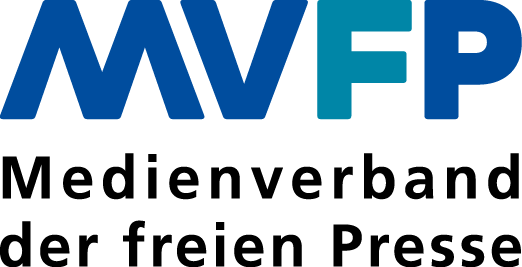Ad trends and the battle for consumers’ attention
Keeping a very close eye on the media and the advertising industry is central to the role of Alina Hückelkamp. The Chief Strategy and Innovation Officer of Razorfish Germany is responsible for the strategic business of all customers of the agency as well as the agency itself.
Alina has worked with many high profile clients including Audi International, DHL, McDonald's, Ikea, Sparkasse and Tourism New Zealand, and develops transformation strategies for the digital business world.
Alina will be one of the speakers at the Digital Innovators’ Summit (DIS) in Berlin, Germany from 20-22 March 2016. Our discounted, pre-agenda booking option is currently available.
Here she shares her views with DIS contributor Ashley Norris on the changing nature of advertising and online marketing, from the rise of native and programmatic through to how brands can achieve higher levels of engagement.
Is native advertising being over hyped? Or is it really going to be the saviour of some media brands?
I think “native advertising” is overhyped. And as with a lot of other “hypes” in the advertising world, the definition of what native advertising really is, is not very precise. Some publishers just relabel their contextual ads (e.g. text + image ads in the related articles section) as native advertising to jump on the bandwagon. Other publishers sell what was formerly known as advertorials as native advertising. But native is much more than just making advertising content look like editorial content. That will not be impress readers. It has to reflect their interests, and the product/brand has to fit into the context and to the publisher’s content.
Are there, or how do you see, opportunities for agencies like Razorfish to work with media companies to create native advertising?
There are opportunities to create content together with media companies. We always develop a content strategy with the client first, and then define what the purpose of branded content is for each platform/channel. This ensures that every content piece that is produced (either with or without a media company) is in line with the overall strategic goals.
What do you make of the rise of ad blocking and the threat it poses to media companies?
It is a big threat to the media companies. With iOS 9, Apple has enabled ad blockers to work with the mobile Safari browser on the iPhone and iPad and this will probably increase the usage of ad blockers in the mobile space significantly.
Ads are specifically intrusive (overlay of content) and annoying (loading time and data volume) to mobile users. The small screens and limited data plans are making ad blockers even more attractive to mobile web users. So Apple’s move is increasing the threat for the media companies.
Bild.de recently denied access to people using a browser with ad block software enabled. According to Bild.de this did not lead to a collapse of visits to the site, and it did not result in the storm that was expected. Maybe the longer-term effects will be different, but this is clearly a way of educating users about the fact that there are costs to be covered for producing editorial work.
The biggest threat of diminishing ad revenue is the way it will hit the small publishers and bloggers who are even more dependent on [advertising for] the monetisation of their content.
And Apple is not only enabling ad blockers but also taking over the control of content in their closed system (Apple News). Facebook is doing the same with their Instant Articles and Google owns a big chunk of the advertising delivery world. This battle has just begun.
Some media observers think the arrival of programmatic advertising buying could herald the beginning of the end for display ads. Your views?
I don’t see this as the beginning of the end of display ads. Programmatic advertising buying was an inevitable step for buying and delivering ads in an automated way. Since the data is there, it makes sense to use it to ensure a more targeted and real-time approach for digital advertising. Now it is a question of how the buying and automated delivery can be used to really deliver the right message at the right moment to the right target audience. Creative and media have to work hand in hand to make this happen.
How can the industry improve display ads and get higher engagement levels?
First of all: not every campaign needs to include display ads (just because they are available). Also creative and media need to work together to make display advertising meaningful. Together they should deliver a story that is told across all (or one) channels, and harnesses data to understand the mindset of the person the campaign is trying to reach. Additionally, the ads should not intrude on a person’s intention for visiting the site. Finally we should let people choose if they want to interact with a brand and not force them into it.
In your view, is the continuing shift from desktop to mobile an opportunity for publishing companies or a challenge?
It is both. It is an opportunity to create content that reflects the user behaviour and content consumption habits. In the same way it is a challenge because the user behaviour is fragmenting even more with mobile usage.
In your view, does it make sense for brands to offer larger destination sites in the way that Qualcomm and GE have in the US? Or is it not better to focus on working with existing publishers?
There is no right or wrong to this. [In this case] Success proves them right. If brands build an expertise in publishing and do it in a consistent way and are able to acquire an audience and maintain it, there is nothing wrong with it. But not every brand can be a publisher and not every brand should be. Credibility is key.
Agencies are now starting to experiment with creating destination editorial sites to rival existing publishers. For example, in the UK Thememo.com is published by an agency. Why has this trend started and do you think agencies will be amongst the biggest publishers as time goes by? Are the lines blurring?
I don’t think that agencies will be among the biggest publishers but I definitely think this trend will continue. Lines are blurring in publishing as brands become publishers, agencies become publishers and every individual can be a publisher. It is not only about the ability to create content but also about how to build an audience. Whoever does this best will win.
*Alina will be one of the <link dis-speakers-2016 _blank external-link-new-window external link in new>speakers at the Digital Innovators’ Summit (DIS) in Berlin, Germany from 20-22 March 2016. Our discounted, pre-agenda booking option is currently <link no_cache dis-register external-link-new-window external link in new>available.





